
Kód: 38831665
Ludische Wissenschaften
Autor Mario Markus
Synopsis of the book: "Ludische Wissenschaften" by Mario Markus, edited by Pfeil, Munich (2022)LUDIC SCIENCE Research projects are currently being promoted or awarded to an increasing extent under the aspect of concrete applicabil ... celý popis
- Jazyk:
 Němčina
Němčina - Vazba: Pevná
- Počet stran: 56
Nakladatelství: Pfeil, 2022
- Více informací o knize

Mohlo by se vám také líbit
-

Amigurumis - soft and cosy!
426 Kč -

Amigurumis - small and sweet!
426 Kč -
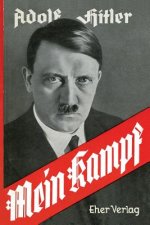
Mein Kampf(German Language Edition)
652 Kč -

Save Me
324 Kč -
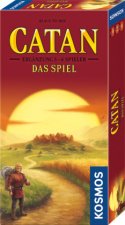
CATAN - Ergänzung 5-6 Spieler - Das Spiel
477 Kč -
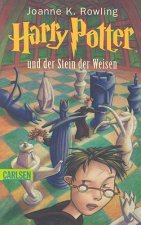
Harry Potter und der Stein der Weisen (Harry Potter 1)
197 Kč -
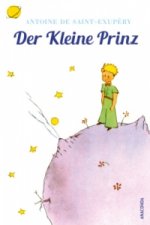
KLEINE PRINZ
130 Kč -

Save Us
324 Kč -
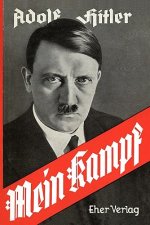
Mein Kampf(German Language Edition)
1224 Kč -

Save Us: Special Edition
545 Kč -
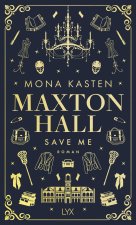
Save Me: Special Edition
500 Kč -

Save You: Special Edition
500 Kč -
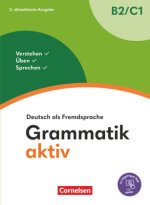
Grammatik aktiv - Deutsch als Fremdsprache - 2. aktualisierte Ausgabe - B2/C1
511 Kč -

Save You
324 Kč -

Mit Erfolg zum Goethe-Zertifikat C1
610 Kč -
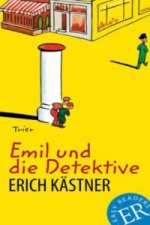
Emil und die Detektive
261 Kč -

Disney Rapunzel (Puzzle)
346 Kč -

Beste Freunde Arbeitsbuch A1.2 mit Audio-CD
260 Kč -

Azul Meister-Chocolatier
1156 Kč -

Beste Freunde A1.2 Kursbuch
283 Kč -

Zigeuner Wahrsagekarten, Orakelkarten
183 Kč
Darujte tuto knihu ještě dnes
- Objednejte knihu a zvolte Zaslat jako dárek.
- Obratem obdržíte darovací poukaz na knihu, který můžete ihned předat obdarovanému.
- Knihu zašleme na adresu obdarovaného, o nic se nestaráte.
Více informací o knize Ludische Wissenschaften
Nákupem získáte 52 bodů
 Anotace knihy
Anotace knihy
Synopsis of the book: "Ludische Wissenschaften" by Mario Markus, edited by Pfeil, Munich (2022)LUDIC SCIENCE Research projects are currently being promoted or awarded to an increasing extent under the aspect of concrete applicability.However, history teaches us that since antiquity we have stumbled across fundamental, new insights almost playfully out of our inner curiosity.In his book "Homo ludens" (1938), the Dutch art historian Johan Huizinga examines the role of play, or playing, as a creative source in many areas of science. Huizinga defines "play" as "an act or activity that is accepted voluntarily and is accompanied by a feeling of tension and joy. According to Huizinga, play is the origin of all innovations, "the place of origin of all major cultural formations".Huizinga states that this not to be understood in such a way that play changes into culture, but rather that culture in its original phases has something play-like peculiar to it, indeed that it is initially performed in the forms and mood of a game. Examples of games that are not technically transformed, that is to say exceptions, are for Huizinga dance, poetry and abstract art.Research with a purposeless attitude is called "ludic" (from Latin ludus, the playing) and is described below using various examples from the past.EXAMPLESThe Leiden Bottle. A glass bottle with a piece of metal on the outside and one on the inside can store electrical charge. It was the first capacitor and was initially used only to produce a brotherly tingling when connected to a circle of hand-holding friends. Billions of such devices are now in miniaturized form in our smartphones.The Mendelian Rules. In the 1860s the benetictine monk Gregor Mendel observed the characteristics of pea plants in the course of their generations. To explain what he saw he conjectured that two factors determine the plant properties, each of which has one of the features that were later called "dominant" and "recessive" This formed the basis of genetic research.Hennig Brand distilled in the year 1675 his urine and obtained a substance that glowed in the dark. He thought he had discovered the "essence of life". Actually, he had discovered a new chemical element: Phosphorus.Thomas Seebeck tinkered with soldering together different pieces of metals. 1821 he found that two wires, one of cooper and one of zinc, soldered together and with the wire ends held at different temperatures, produced an electric current. He thus discovered the first electric thermometer.László Biró saw 1928 his daughter rolling a marble through a puddle surrounded by dry earth. The water left a trace. From this point on he made an enormous number of "experiments" placing very small bearing balls at the end of a thin tube filled with ink. The ballpen he finally built in this manner was especially welcome in open airplanes, where the ink in traditional fountain pens flowed out because of the lower pressure outside. His ballpen factory made him a millionaire.A positively charged electron, called a positron, was a curiosity when Paul Dirac predicted it in 1928 by playing with mathematical formulae. Today, diagnosis with PET (positron emission tomography) is used at many large hospitals for the detection of tumors and other anomalies.The vacuum was a matter of discussion for philosophers since antiquity. It was questioned whether it exists. In 1675 Otto von Querike built an air pump to try to produce a vacuum. To do this he took two halves of a metal sphere (Diameter: 42 cm), stuck them together using a strong glue and extracted the air inside it using his machine. He then needed the strength of several horses to separate them, which was interpreted correctly as being due to the pressure of the air outside acting on the pressureless vacuum inside.Otto Hahn and Lise Meitner played the same game for years: Shoot neutrons on uranium to see if a chemical element heavier than uranium, the heaviest element at that time, was
 Parametry knihy
Parametry knihy
Zařazení knihy Knihy v angličtině Mathematics & science
520 Kč
- Plný název: Ludische Wissenschaften
- Autor: Mario Markus
- Jazyk:
 Němčina
Němčina - Vazba: Pevná
- Počet stran: 56
- EAN: 9783899372762
- ID: 38831665
- Nakladatelství: Pfeil
- Hmotnost: 360 g
- Rozměry: 11 × 178 × 247 mm
- Datum vydání: 21. April 2022
Osobní odběr Praha, Brno a 12903 dalších
Copyright ©2008-24 nejlevnejsi-knihy.cz Všechna práva vyhrazenaSoukromíCookies



 Vrácení do měsíce
Vrácení do měsíce 571 999 099 (8-15.30h)
571 999 099 (8-15.30h)